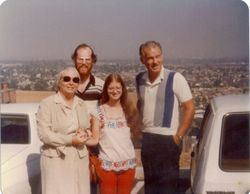
Now, a caveat. I was named for my mother’s grandma O’Donnell, who was born Anna Korzeniowski, in New Bedford, Mass., in 1867. Anna’s dad was Polish, her mother English. Dana is a Polish name, and sounds as much like Anna as my sister Michael’s name sounds like Mathilda. It took me six decades to figure all this out – the Polish origins of Dana are why I’m the only Dana Blankenhorn you’ll ever see or hear from (a great present from my mother to the Internet age). But my grandmother was born a Cooney, and they’re even more Irish than the O’Donnells.
What this means was that I just had to make a pilgrimage to Ireland. I had to go to Ireland, in the worst way.
![20151007_142658[1] 20151007_142658[1]](https://www.danablankenhorn.com/wp-content/uploads/2023/07/6a00d83451da3169e201bb08820a40970d-250wi.jpg)
We spent the first two days without money or phone. My bank hadn’t acted on my phone call about the trip and refused to let me use my plastic money until I called them from Ireland. My phone company refused to let me get a SIM card until I paid for the phone. Thank God for Linuxcon, just starting in Dublin as we landed. An assistant to President Jim Zemlin let my wife borrow his phone to yell at the bank, and once her dumb phone started working we got the smartphone straightened out, for $400 to buy out the sales contract and take possession.
We spent the middle part of the trip on the commode, thanks to either a full Irish breakfast, the water that came with the whiskey at the Whiskey Museum, or perhaps Dublin’s best fish-and-chips. Anthony Bourdain writes that Imodium is a must-pack for any overseas trip and I can now endorse that 100%, the hard way. We really didn’t feel like anything until Friday night, when we were due to leave for home on Monday morning.
But it was a great, great trip, and I learned some things that are important and worth talking about, as opposed to what you read up until now.
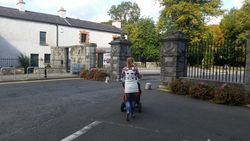
Whatever. There’s money everywhere. It’s amazing how much nicer a country is when people have decent jobs and there’s opportunity about. The roads are skinny but they work, thanks to a network of cameras that catch the crazy drivers and prevent most bad, bad accidents. It’s safe because they had no Antonin Scalia to twist the meaning of a militia amendment so every looney with a grudge was armed like a Provisional IRA leader during the Troubles.
Dublin especially. Dublin is a lot like London was a few decades ago, before Cameron’s Tories got hold of it and started building huge skyscrapers and gated communities everywhere. Central Dublin today is absolutely packed with young people, not just Irish young people but black folks and Middle Eastern folks and even Chinese folks, all trying to put on Irish accents and doing all they can to make enough to bring the rest of their families in, or provide for said families, or start families. It’s very exciting. It makes for incredibly crowded streets, commutes of six miles that can take an hour in a car, pedestrian malls that feel like midtown New York sidewalks.
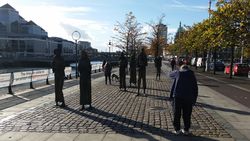
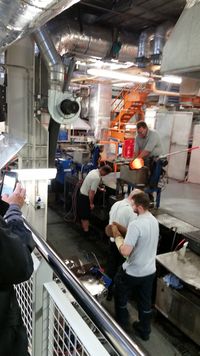
Outside the Dublin area, on the other hand, young Irish people are as scarce as hens’ teeth. Those who stay are treasured by their elders, they and their grandchildren are made much of, and those elders who are without try to get along as best they can. In Cork, or Waterford, or Limerick, these young families aren’t the best Ireland has to offer – those folks still leave — but they’re nice enough. And their lives are rich beyond wealth.
Still, there’s an enormous generation gap coming as the young people of Dublin start flexing their economic and political muscle in the countryside. The land use policy of Ireland today is a bit like that of Portland. Once you get out of town, you’re in the countryside – none of that 30 miles of suburb and 40 more miles of exurb you get in a place like Atlanta. That’s good, but the pressure of all those people and all that money is going to extend Dublin out at least 20 miles in every direction by the end of this decade. Maybe further, if they get hold of the government and start building the kind of American suburban lifestyles they are going to want 10 years from now.
The Irish road system is a bicycle wheel, spokes of freeways extending toward every major center to the northwest, west, southwest and south, toward Donegal and Letterkenney, Sligo and Galway, Limerick, Cork and Waterford, all centered on a single ring road around the city called the M50. This means that just about anything is just a few hours’ drive away. Great for tourists. If you get a room near the M50, a toll road that does what I-285 does in Atlanta or the 610 Loop does in Houston, you can do anything in a day trip.
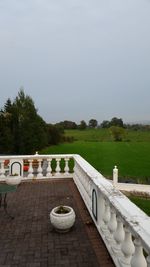
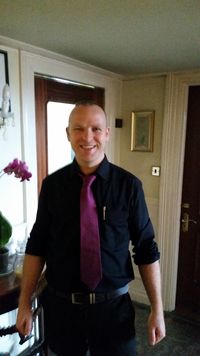
Ireland today is a very secular country, and this could be an opportunity for reunification, especially if Britain decides to exit the EU, but this secularity is a very recent development. On the plane ride back home I had a good cry over a movie called “Jimmy’s Hall,” a true story set in 1933, in County Leitrim, telling of how even after the Republic was founded the Catholic Church and the gentry conspired against anything like learning and secular thought in the countryside. A sad tale, if you hadn’t just spent a week in today’s Ireland, where men like Jimmy Gralton are acclaimed as heroes and the poets he loved, like W.B. Yeats, have had their grave sites turned into tourist attractions. But it’s all within the living memory for those pensioners I met in Cork and Limerick and Donegal.
The bottom line here is you should really go to Ireland. Now, before it’s transformed yet again. That transformation could be “good” for the Irish, if rather ugly in an American suburban sense. Or it could be bad, if Americans get sick of losing businesses to Ireland and the Europeans get tired of letting the country retain its special place in the tax laws as well. That could transform today’s Dublin go-getters into the urban poor, set off a violence crossing age and religious lines across the island, burn through that pot of gold and set off another diaspora.
So go, now. While you have time. There are 75 million people in this country with Irish descent, like me, and even if you have none pretend. You’ll be glad you did.










